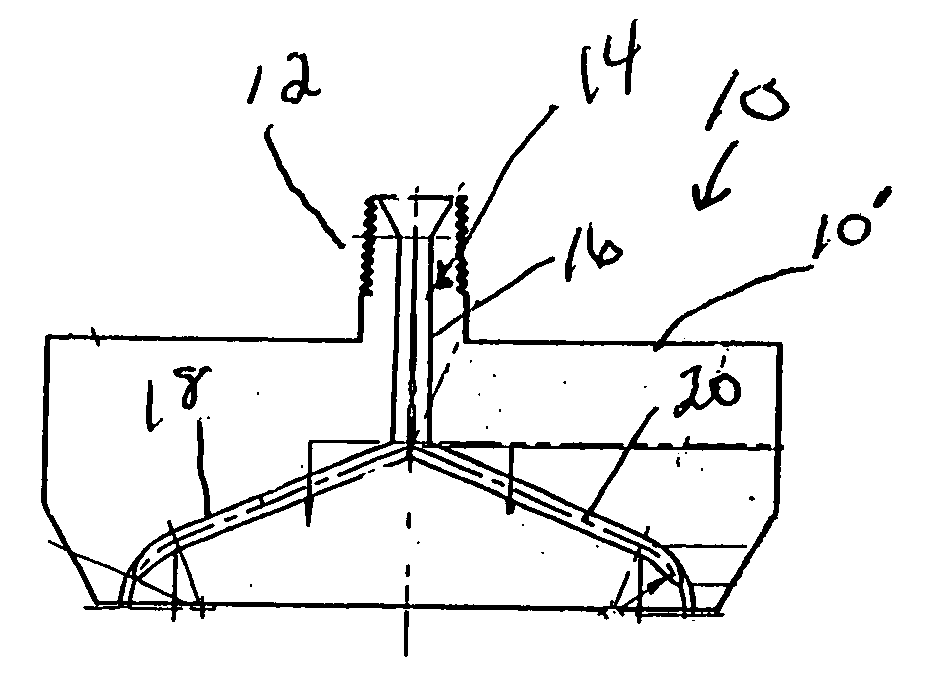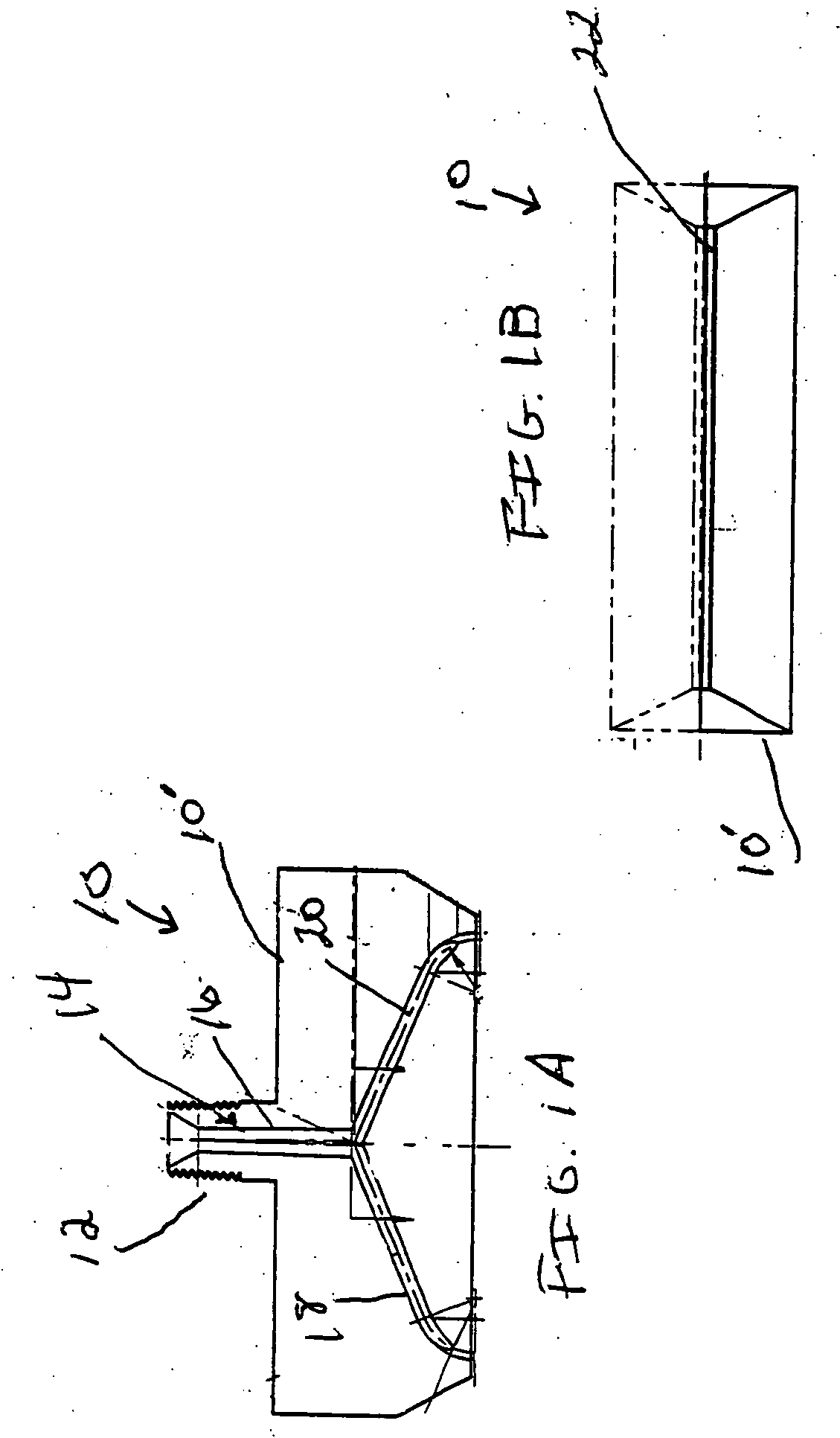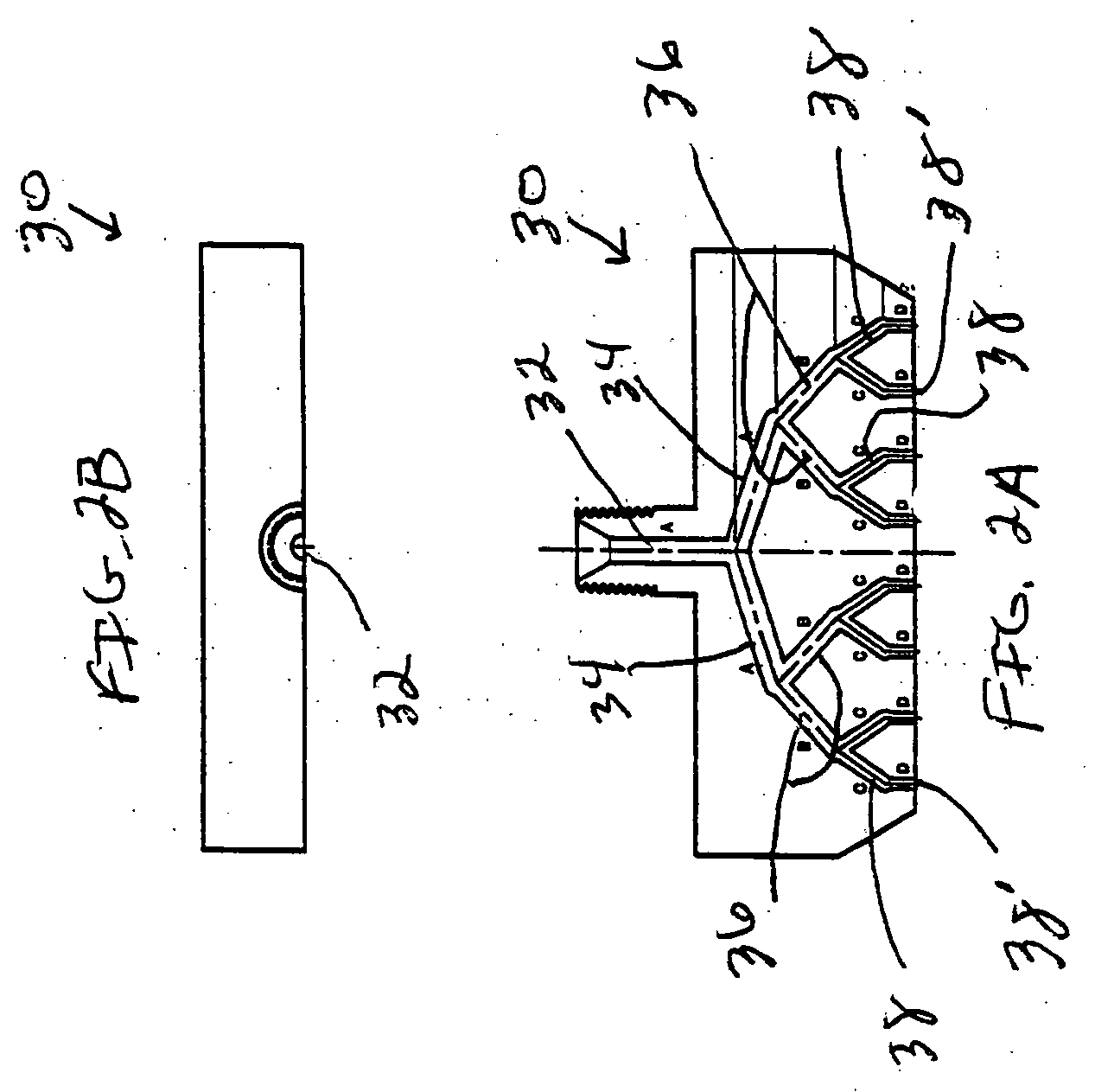A considerable problem with rotational casting machines is the trade-off of forming a liquid polyurethane having a desired
viscosity and reactivity in order to prevent run-off or dripping of the applied elastomer from the body being coated during the
coating process, and the need to prevent the clogging of the dispensing head attached to, and forming part of, the mixing head during the coating-application process.
If the
viscosity is made too great or reactivity too fast, then the dispensing head tends to become clogged faster, requiring more frequent down-time in order to unclog and clean the dispensing head.
However, the problem with these prior-art dispensers is that each hypothetical section of the liquid elastomer exiting the dispensing head at the exit thereof has not, typically, had the same dwell-time in the dispensing nozzle along the width and the length thereof, whereby there is not ensued that the exothermically formed elastomer has the same properties throughout when applied to the body to be coated.
However, even changing sheet-dies in order to accommodate materials of different
viscosity / reactivity in order to prevent frequent clogging of the sheet-die in order to obtain the desired coating thickness, has still not solved the problem of the frequent clogging and associated frequent down-times when sheet-die nozzles are used.
Over time, a build-up of solidified material develops, causing clogging at or near the exit, as well as interiorly thereof which forms the build up of solidified
whiskers or “stalactites” of reacted material that interferes with the material deposition on the body.
If the exiting
stream of liquid material were too thick, or tall, the interior portion of the reacting liquid while still in a fluid state would not have built enough viscosity to support the column height of the
stream and would run or drip off the body to which it was applied.
If the reactivity were adjusted to build sufficient viscosity quickly enough to support the
stream column height, the stream would not be liquid enough to flow onto the precedingly-applied material and an uneven coating would result.
This has, in fact, been one of the serious problems of the prior-art nozzle for rotational casting machines; that is, in a relatively short period of time, the nozzle becomes clogged and unusable, requiring the disassembly and cleaning thereof, which also causes considerable down-time to the rotational casting
machine.
Moreover, since the slit-opening 22 is fed by two branches feeding into the ends of the slit-opening, the liquid-material application onto to the body to be coated is ofitimes inconsistent and uneven, and is also limiting in the range that the distance the nozzle may be relative to the body to be coated.
However, the prior-art nozzle 30 has not addressed nor overcome the problem of consistent and frequent clogging of interior passageways described above with regard to the nozzle 10 of FIGS. 1A and 1B.
If the rotational speed of the rotating body were to be too great in comparison to the exit speed of the liquid material from the nozzle-exit, then the applied coat may be thinner than required, and require additional coating
layers to be applied to the rotating body, reducing the efficiency of the process, and also would cause air to become entrapped in the applied liquid, causing air
blisters to form, since there would not be enough time for the applied stream to
push out the air between the applied stream and the surface of the rotating body.
On the other hand, if the rotational speed were to slow, then productivity and efficiency of the process would be adversely affected, would also increase the likelihood of premature curing, causing the eventual clogging of the nozzle, and uneven application of the coating to the rotating body.
Similarly, if the relative
translational motion between the exit-nozzle and the rotating body were too slow, the efficiency and productivity of the process would be adversely affected, and would also cause an applied coating that would be too thick, thus causing dripping of the applied liquid from the body being coated, as well as potentially uneven thickness of the applied coat.
The need and requirement for optimal correspondence between exit speed of the liquid from the nozzle, the thickness of the exiting stream of liquid, the rotational speed of the rotating body being coated relative to this exit speed of the liquid from the nozzle, and the relative translational speed between the nozzle and the rotating body being coated has imposed significant constraints as to
linear distance the exit of the nozzle of the rotating casting machine may be from the surface of the rotating body being coated.
A distance greater than 5 mm. has been found to cause excessive clogging of the nozzle, with a concomitant increase of
downtime of the machine for unclogging the nozzle.
The increase in speed of the liquid through the nozzle increases turbulent flow in the nozzle, thus increasing the dwell-time of the liquid in the nozzle, and the increased curing thereof in the nozzle, with the ensuing clogging of the nozzle, as discussed hereinabove.
Besides the increased clogging of the nozzle, air
blisters form in the applied coating of liquid, for the reasons described hereinabove due to the increased exit speed of the liquid from the nozzle-exit.
Another considerable problem with the sheet-die nozzle of FIG. 1 is that the size of the rotating body that may be coated with the liquid exiting therefrom is limited.
Cylindrical bodies having a
diameter less than approximately five inches have not been able to effectively coated with liquid.
 Login to View More
Login to View More 


